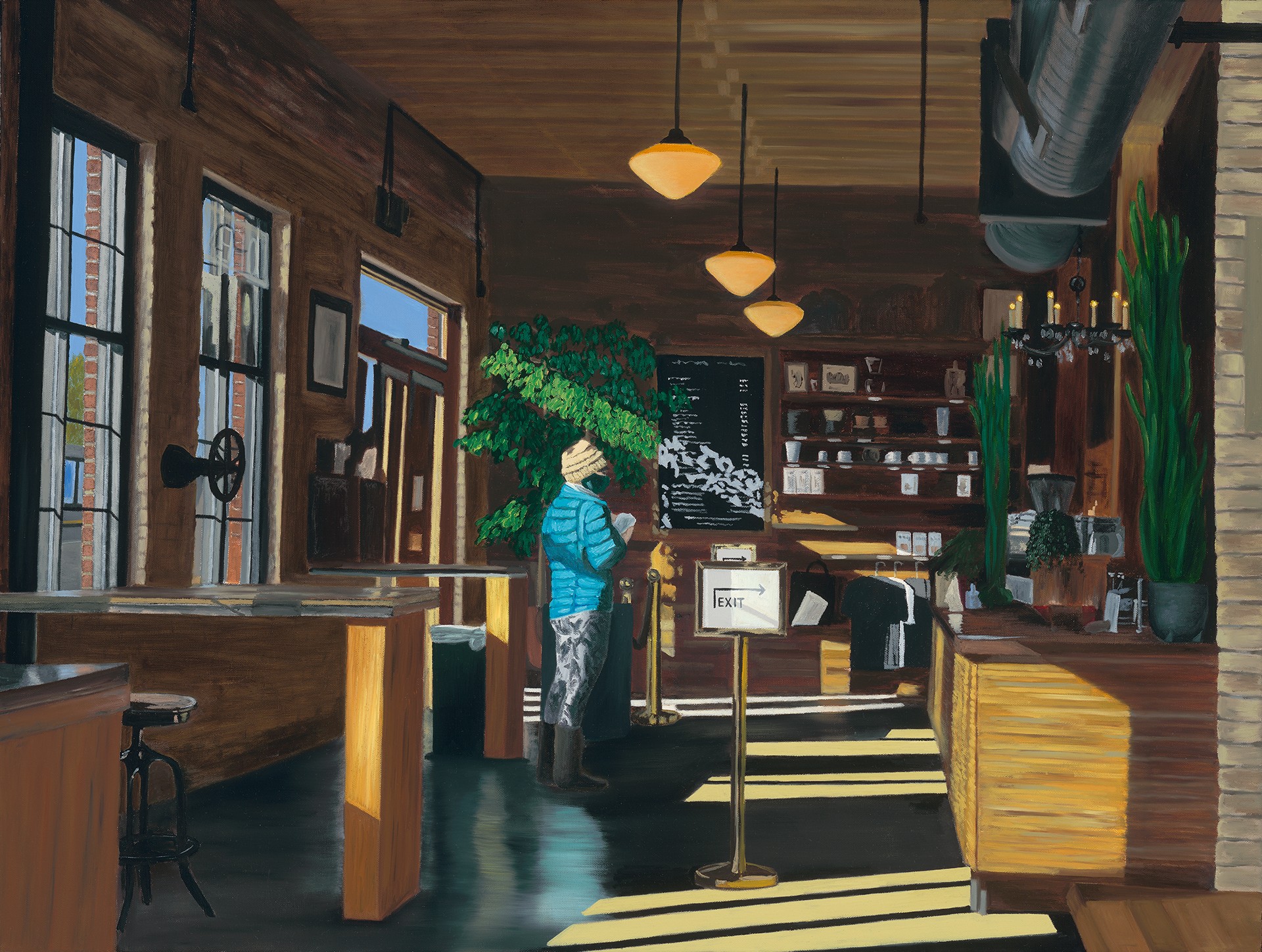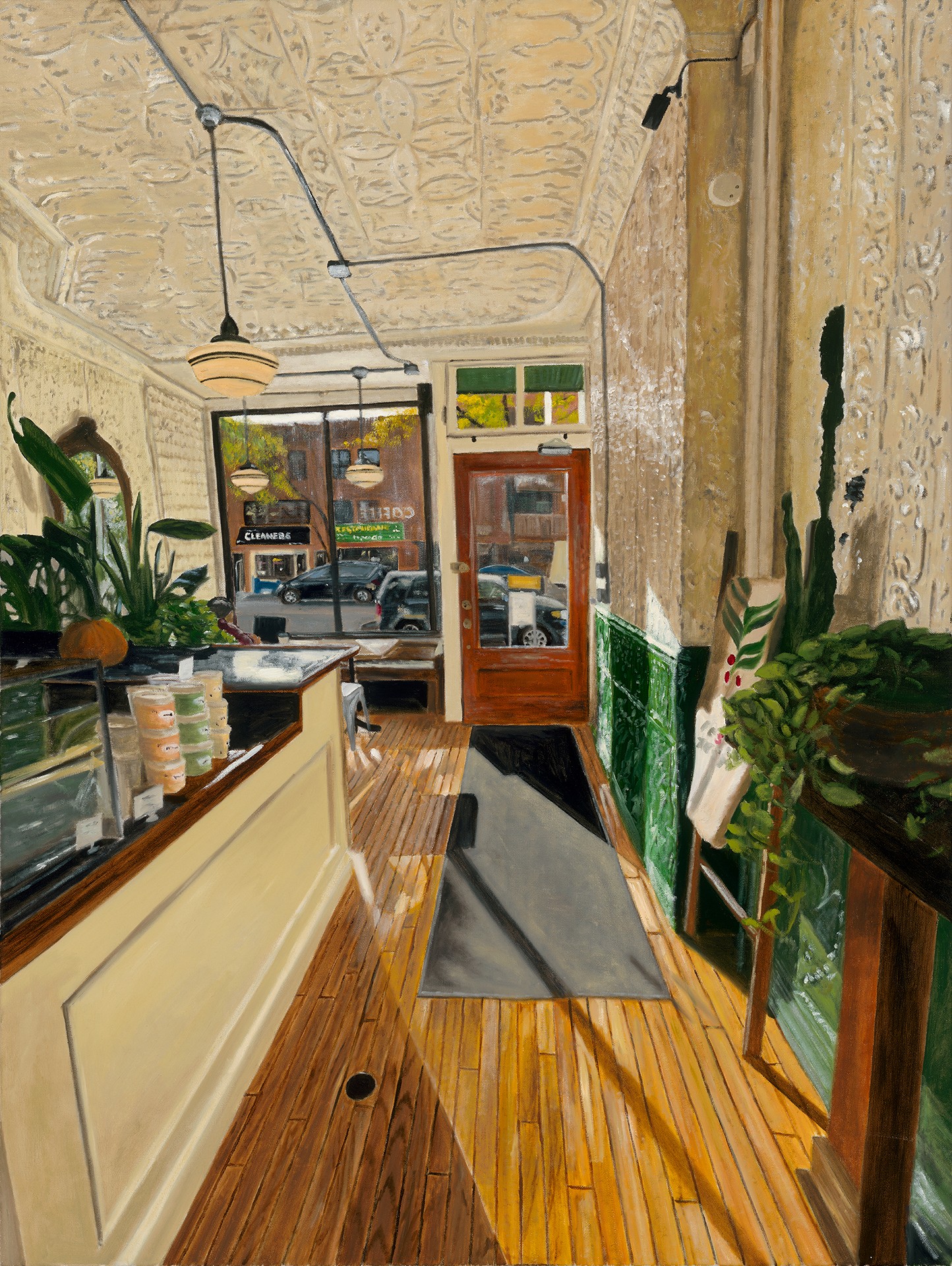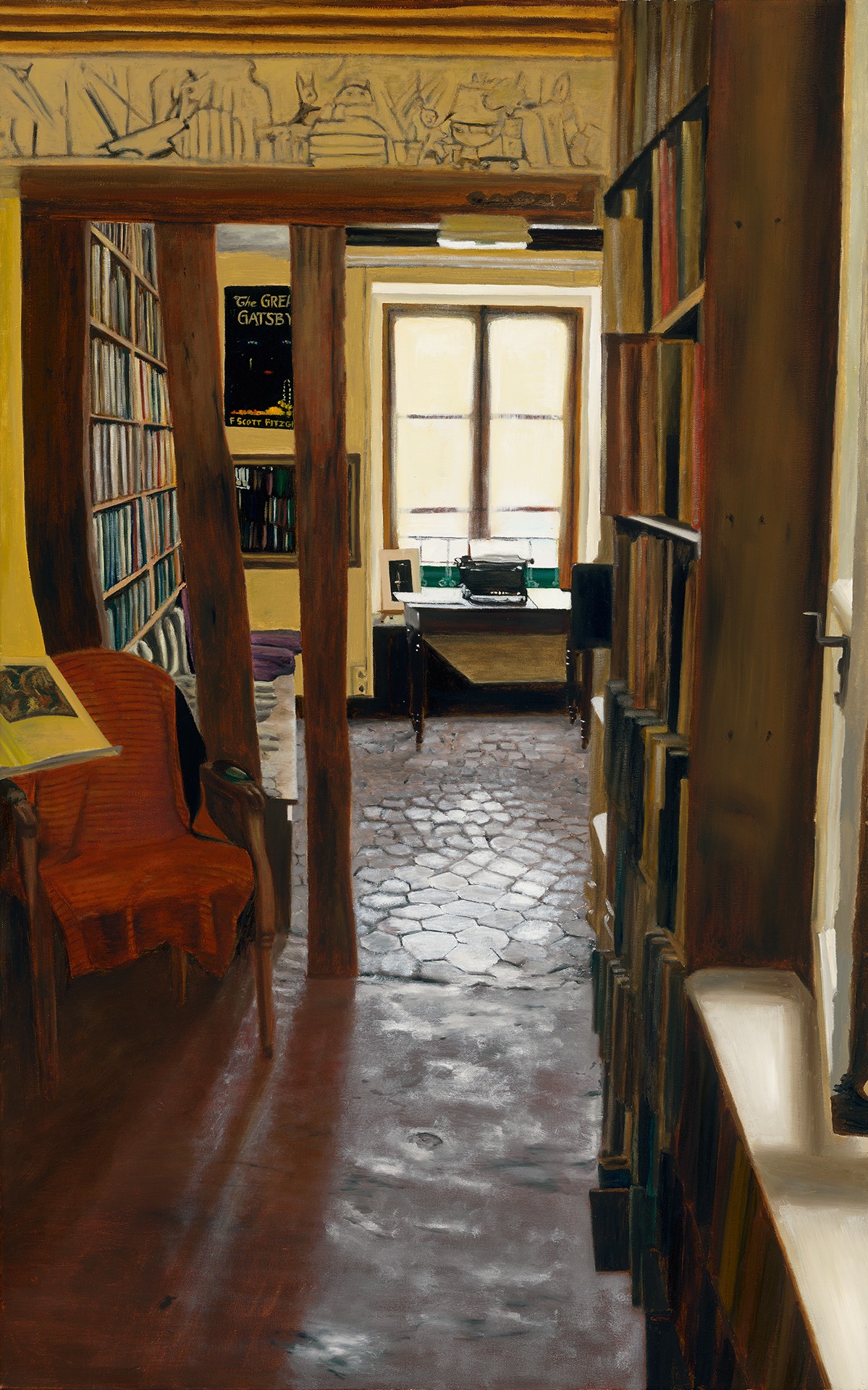We caught up with the brilliant and insightful Brendan Kramp a few weeks ago and have shared our conversation below.
Brendan, looking forward to hearing all of your stories today. Have you been able to earn a full-time living from your creative work? If so, can you walk us through your journey and how you made it happen? Was it like that from day one? If not, what were some of the major steps and milestones and do you think you could have sped up the process somehow knowing what you know now?
I worked in the fundraising and corporate development field for 17 years in a few different countries (UK, France, and USA) before I was able to build up my creative painting practice to the level where I could live on it. For the last 7 years of my former career, I painted regularly on nights and weekends around a full time job in order to start showing, selling, applying to grants, etc. I did not even plan at first on pursuing painting as a full time job — I started it after moving back to the Twin Cities in Minnesota, where I grew up, and since I had the space I decided to try painting again like I had in high school. I ended up spending a huge amount of time in the evenings and weekends painting while working a full time job. I started showing in local spaces like coffee shops and open studio events where I could hear and see the public respond to my work. I started with a very simple web site in order to have my work available online, and eventually, when I was able to move to full time work on my painting in 2019, I chose an online platform that allows for the easy sale and fulfillment of prints in addition to selling my originals and communicating other information about me. That was a key step as people will research you if they see your work somewhere or come across a profile on Instagram or Facebook. The other key step for me was starting to show at art fairs. I did this first in 2017 by doing a tester at an outdoor art fair in Minneapolis. I was able to rent a tent, and have help in set up to trial the fair. After that I did a couple more in 2018, and in 2019, the year I went full time, I did 14 indoor and outdoor fairs between May and October of that year. It was pretty grueling and the outdoor fairs are a ton of work for setup, staffing, teardown, etc. but I haven’t found a better solution for having a large volume of people see my work and react to it and start conversations. It has also given me a good sense of what kinds of works, price point, subject matter, size etc will sell at certain fairs or venues, in addition to seeing what so many other artists are doing. Having a sense of the greater marketplace is very important in order to see where I can sell my work successfully.


Awesome – so before we get into the rest of our questions, can you briefly introduce yourself to our readers.
I am a full time fine art painter, almost all in oil, and I primarily make representational and figurative paintings. I’m very drawn to subjects like urban interiors, cityscapes, and environments with a strong sense of light and atmosphere. I didn’t study art in college — I studied Literature and Writing — and lots of people see a narrative quality in my paintings that encompass characters and settings and a sense of story. I often think of my paintings as if they are a still from a film or could be on a poster to show just one scene that articulates the overall mood and action of a greater story.
I draw my inspiration from the spaces and people around me. I often go around with a camera or my phone taking 100’s of pictures of scenes that I think could eventually make a good painting. I also travel a fair amount and lived abroad for 10 years, so I gather scenes and interesting feeling views when I travel that I also think may translate well to paint. Once I have my source images and drawings, I map out my paintings in the studio and edit out certain objects or sections that I don’t think lend themselves to the quality or mood of the painting. I also heighten certain light or colors in order to convey a real atmosphere and visual interest. Choosing where I focus and what I include is a piece-by-piece process and really comes down to my intuition and sense of what “works” when I look at the painting. Over time I’ve been moving towards a more simplified or pared down style in some paintings and I really enjoy it — it makes the stakes higher in terms of conveying more with less, and really focusing the viewer on a certain number of objects or people.
I spend lots of time in coffee shops and walking around cities, so those come into my work all the time. Many people see elements of Edward Hopper in my work, and I’ve also been told that my work reminds people of Andrew Wyeth, Richard Estes, and David Hockney. I like all of these artists so I always find these comparisons hugely flattering. I think that I am drawn to similar elements as Hopper — a sense of light and contrast, strong atmosphere, and the way that people both occupy and become formed by their environments. I see story in just about everything.
I painted a lot in high school, where we had a great program, and then stopped in college when I had to pick a major and went for Literature and Writing. I then started my career and lived in lots of small, shared spaces so the idea of painting wasn’t very realistic. I always had it in the back of my mind and had certain impulses to try it again, but I didn’t take action until 2012 when I moved home to Minnesota and had a big loft space in an old warehouse where I could set up and try painting. I was spending lots of time in coffee shops then getting back in touch with friends and old haunts from when I lived in Minnesota, and they served as great springboards for subjects for paintings.
Over the last 12 years, I’ve developed a decent following and set of clients. About 50% of what I do now are custom commissions for clients that see my work and have an idea, place, or image that they’d like to have in my style of painting. The commissions are great fun and have run the gamut of painting the interior of a store founded by one collector to painting a family walking through Paris’s Place Vendome on vacation to painting the interior of a favorite coffee shop in Nantucket and more. What I love about this process is that each of the place or views has a very special memory and importance associated with it, and I become responsible for conveying that feeling and emotion for the client. I also like testing myself and stretching to take on new challenges. I recently did a landscape that was an amalgamation of two different views in Palm Springs brought together in one large painting that will hang in the client’s renovated home here in Minneapolis. This challenged me to create a sense of realism and continuity for a landscape that doesn’t really exist as I’ve painted it.
I work in a big range of sizes, starting as small as 18″ x 24″ and going up to 7 foot canvases, but the majority of my work lies in the middle with canvases in the 30″ x 24″ or 40″ x 30″ range that fit nicely in most homes or apartments. I also had a great opportunity to do a huge all-room mural for a shared children’s playroom in a Ronald McDonald house here at the University of Minnesota Hospital — that was a special project and one that I would like to build on with other custom room murals and scenes.


Let’s talk about resilience next – do you have a story you can share with us?
I remember reading about the La Quinta art fair in La Quinta, CA when I was researching fairs in the US. It was always ranked right at the top, had a reputation for being hard to get into, and online chat rooms and posts had artists talking about the huge sales they did. I applied for a few years and finally got in for a spring event, so I drove 3 days from Minneapolis to La Quinta, set up in 90 degree heat on the beautiful golf-course like park they have, and spent the next 4 days selling absolutely nothing. I was placed in an in-between area off the main pathways, but I still had decent traffic. I kept thinking about how much I had spent to go to this fair — 3 days driving, hotels and airbnb, the tent, driving back, etc. It was a real gut punch, but I ended up selling nothing there and came back feeling really dejected. The funny thing is I ended up selling a good number of the works I brought there at other fairs and venues, and that is where I learned — audience and market are everything. It may be a great selling fair for some people, and there was lots of desert-themed art and landscapes around me, or bright floral and abstract pieces that went well in retirement homes, but it wasn’t my audience. This was a hard way to learn it, but you can’t go by the ratings or reputation of a fair alone, you have to gain as much information as you can about who likes and resonates with your art and find them. What this did teach me, also, is that fairs are not always the best sales channel. I started shifting my strategy to many more static shows in restaurants, show spaces, galleries, clubs, etc. where I am the only artists and my work stays up for months, and that has proven to be a great strategy. It’s also much better in terms of cost and my time, so it’s a win win. You have to remember when you have a bad sales event or maybe even bad few months, that you already have information about where you have sold. Try to find out as much as you can so you can replicate that, and then go test out new spots. I’ve found that to be the best way to focus my time and efforts after lackluster sales.
What’s the most rewarding aspect of being a creative in your experience?
I love being able to manage my own time and effort. When I worked in corporate and organizational roles, I saw so much bad decision making and poor management. I’ve never been a person that needed someone to tell me to do work or motivate me or any of those “traditional” managerial aspects. What I enjoy is having people that inspire and show by example. What I found in going on my own is I’ve been able to go farther and faster than ever possible in my other roles, because I will spend the time to respond, get works right, paint when inspired, and follow up opportunities. There are some days that are very long and other days I take a morning to sit in a coffee shop and just dream and think about works. There is a rhythm to it, but since I am responsible to myself and my clients I always get it done, it just doesn’t fit a 9-6 mentality. I also made sure that I set up several safeguards when I decided to go full time so that I wouldn’t falter if I had slow sales or needed a long build up. I created savings to rely on, I took a HELOC on my home just in case I needed to dip into it, and I made very very low sales projections for my first year to keep things realistic and make sure I could survive even with a slow start. It all worked out, but good financial planning and having several self-created safety nets helps you to know you will be okay. That allows me to keep my energy and focus on the work and not worrying about financial risks–I already planned it, so that time is mine to use as intelligently as possible to create work, get it in front of collectors, and make sales.
Contact Info:
- Website: www.brendankramp.com
- Instagram: Brendan_Kramp_Studio
- Facebook: Brendan Kramp Workshop & Studio


